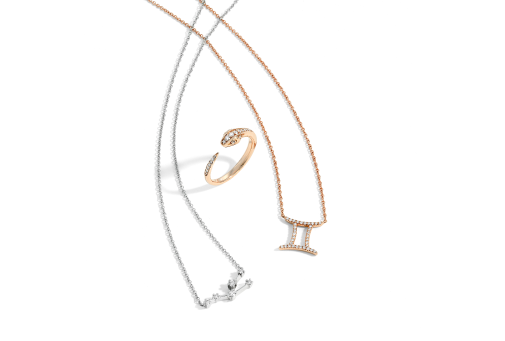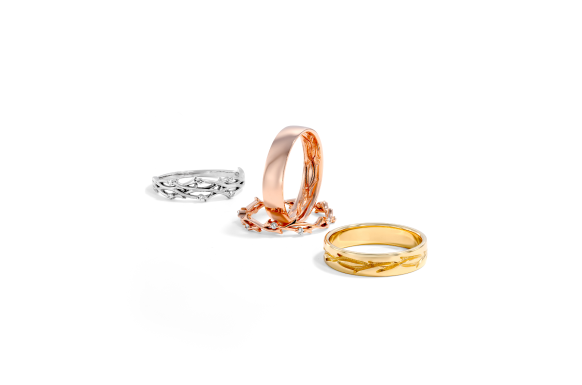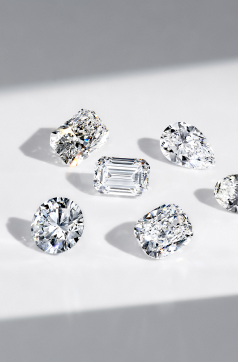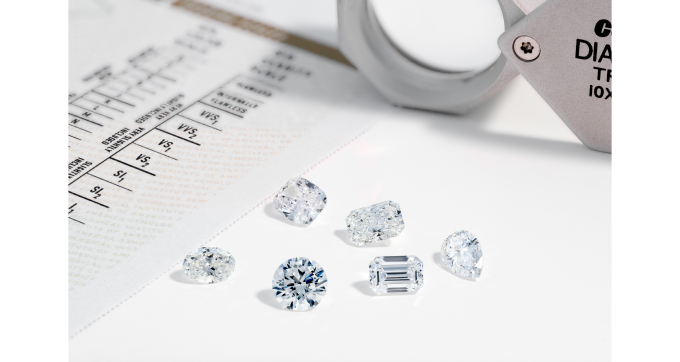1
2
3
Select your Stone Shape and Quality
Use the filters below to design your perfect engagement ring
Carat
1.0
Quality high-carat stones are hard-to-find in nature and difficult to create in labs. They’re valued for their size and rarity. Some diamond shapes, like the oval and pear, look bigger than their carat weight.
Carats measure a stone’s weight. The higher the carat weight, the heavier and bigger a center stone. Use the slider to see how diamond size changes with carat weight.
Quality high-carat stones are hard-to-find in nature and difficult to create in labs. They’re valued for their size and rarity. Some diamond shapes, like the oval and pear, look bigger than their carat weight.
Quality high-carat stones are hard-to-find in nature and difficult to create in labs. They’re valued for their size and rarity. Some diamond shapes, like the oval and pear, look bigger than their carat weight.
Color
G
Color refers to the natural tint of a diamond. The closer the diamond is to “colorless” the rarer it is. The industry standard to grading color in a diamond is to assign a letter grade from D (colorless) to J (nearly colorless)
These slightly tinted diamonds are nearly colorless, especially when set in rose and yellow gold.
These diamonds are nearly colorless. Any tint they have is hard to see. Best value for money; large stones available at low prices.
Completely colorless, these diamonds are rare and highly sought after. A good choice when money is no object.
Color refers to the natural tint of a diamond. The closer the diamond is to “colorless” the rarer it is. The industry standard to grading color in a diamond is to assign a letter grade from D (colorless) to J (nearly colorless)
Color refers to the natural tint of a diamond. The closer the diamond is to “colorless” the rarer it is. The industry standard to grading color in a diamond is to assign a letter grade from D (colorless) to J (nearly colorless)
Clarity
FL
Most diamonds have imperfections in the form of internal flaws and surface blemishes. These imperfections are graded on a scale of FL (flawless) to I1-I3 (included). FL diamonds are the rarest and hardest to find.
Inclusions are clearly visible to the naked eye.
Slightly Included. Inclusions are easy to see under 10x magnification. Some are visible to the naked eye.
Very Slightly Included. inclusions are present, but hard to see under 10x magnification.
Very, Very Slightly Included. Inclusions are present, but extremely hard to see - even under 10x magnification.
Internally Flawless The diamond is internally flawless but has tiny external blemishes. Rare, hard to find, and beautiful.
Flawless. The diamond is flawless. Stones like this are extremely rare, expensive, and difficult to buy.
Most diamonds have imperfections in the form of internal flaws and surface blemishes. These imperfections are graded on a scale of FL (flawless) to I1-I3 (included). FL diamonds are the rarest and hardest to find.
Most diamonds have imperfections in the form of internal flaws and surface blemishes. These imperfections are graded on a scale of FL (flawless) to I1-I3 (included). FL diamonds are the rarest and hardest to find.
Cut
Very Good
A diamond’s cut measures its anatomy and ability to reflect light. Cut grades go from “Excellent” to “Poor”. Well-cut diamonds have outstanding proportions with immense fire, brilliance, and scintillation.
Decent proportions and sparkle.
Close to perfect in terms of light reflection and proportions.
Incredible fire, brilliance, and diamond anatomy.
A diamond’s cut measures its anatomy and ability to reflect light. Cut grades go from “Excellent” to “Poor”. Well-cut diamonds have outstanding proportions with immense fire, brilliance, and scintillation.
A diamond’s cut measures its anatomy and ability to reflect light. Cut grades go from “Excellent” to “Poor”. Well-cut diamonds have outstanding proportions with immense fire, brilliance, and scintillation.
Let’s find the perfect diamond for you.
What shape do you prefer?
How much are you looking to spend on your diamond?
Or choose a ready-made option
What matters most to you?
The result are in! Here are the best diamonds for you.
None of the Products Were Found
Change the results of your output in the filter.
Showing out of




